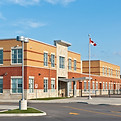
Managed Wireless Solutions



Multi-dwelling Wireless
Recreational Wireless
Educational Wireless
Apartments, Dorms, and Senior Living Facilities
RV Park, Campground, Events
Schools, Co-Ops, Private Learning Centers, Universities


Hospitality Wireless
Restaurants, Hotels, Motels, Event Centers
Municipal Wireless
Federal, State, and Local Government
Large Scale Wireless
The growth of mobile data generation through wireless networks has been fueled by the popularity of smartphones and other portable devices. This growth is only expected to continue into the future as well, as new technologies are developed and released each day.
According to recent studies, in 2022, 71 percent of the traffic generated by devices that enable cellular and Wi-Fi connectivity was offloaded over Wi-Fi, and this number is predicted to rise to 80 percent by 2030. As a result, IEEE 802.11 networks are the primary access network for a large number of end-users in a variety of settings.
The Effects Of Large Scale Wireless Networks
Instant access to email, the internet, and other IT services, regardless of location, can have a significant impact on how people live, work, study, learn, and play. The experience is much better when wireless coverage is combined with voice and video.
Today, nearly everyone who visits your company has used wireless internet connection at home or at work. This type of connectivity is also present in coffee shops, libraries, airports, and hotels. As a result, it’s no surprise that when visitors arrive in your company, they anticipate Wi-Fi to be available so they can access all of the information and services your business offers.
What Are Wlans?
WLANs were designed to facilitate LAN connections in situations where the premises wiring systems were insufficient to support traditional wired LANs.
Because the technology became accessible in the form of a PC card, or PCMCIA, in the 1990s, It was then that WLANs became synonymous with mobility. They can service mobile PCs located an entire building away without sacrificing speed or network quality.
Both network adapters (NAs) and access points are commonly found in WLANs (APs). The NA is a PC card that may be inserted into a mobile computer to provide access to the AP (or access point). The AP is a fixed-position data bridge/radio base station that is connected to a wired LAN.
A transmitter, receiver, antenna, and hardware that provides a data interface to the mobile computer are all included in the NA. The AP then connects NA-equipped mobile PCs to the wired LAN using the listed equipment. The AP’s bridge functions to send and receive packets to and from the wired network as needed.
Additionally, most wireless LANs support “roaming,” which means that mobile computers can accept a handoff as they travel from one AP’s coverage area to another, ensuring that service is maintained.
As mobiles move from one AP coverage area to another, the bridge tables that are stored in each AP must be updated in order for this handoff to be successful. Direct peer-to-peer (mobile-to-mobile) communication in wireless LANs can be accomplished in one of two ways:
-
A mobile phone can communicate directly with another mobile phone in some wireless LANs.
-
In others, two mobiles may only communicate by having their messages routed by an AP, regardless of range.
Datawise Solutions can help you develop, establish, and maintain your own large scale wireless network to ensure you’re always online. We’ve helped businesses like yours succeed for decades, and we’d love to do the same for you.
If you have any questions or would like to learn more about our services, please don't hesitate to contact us.
Our friendly and knowledgeable staff is always ready to assist you.
